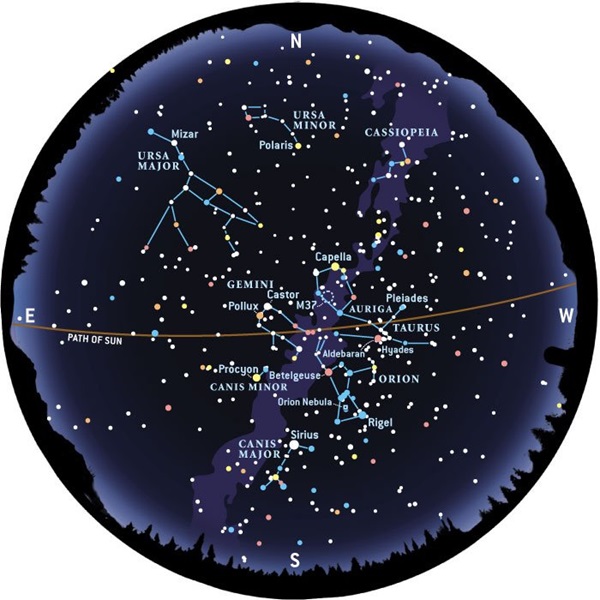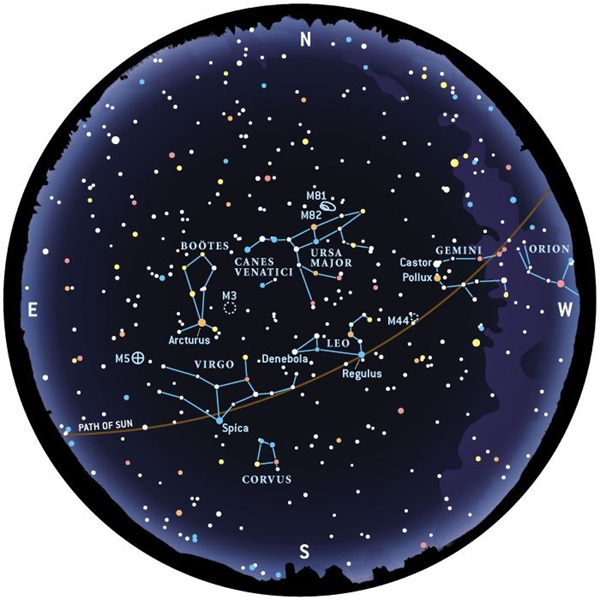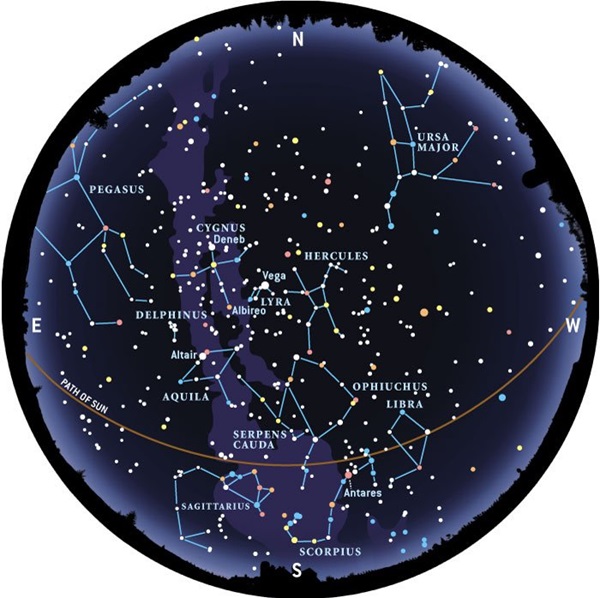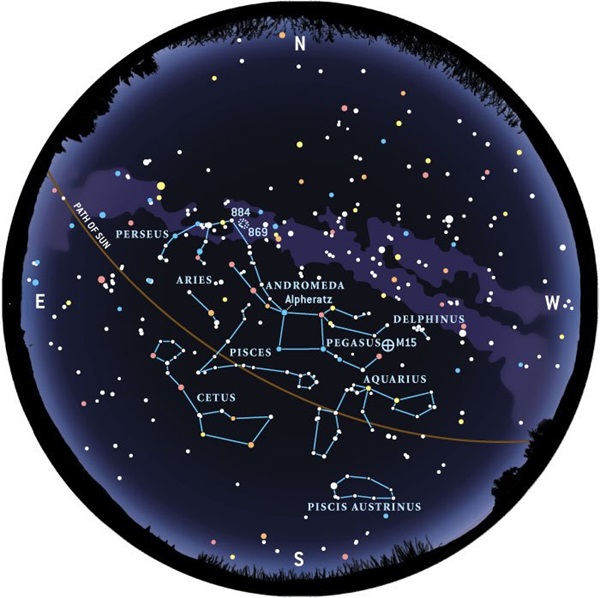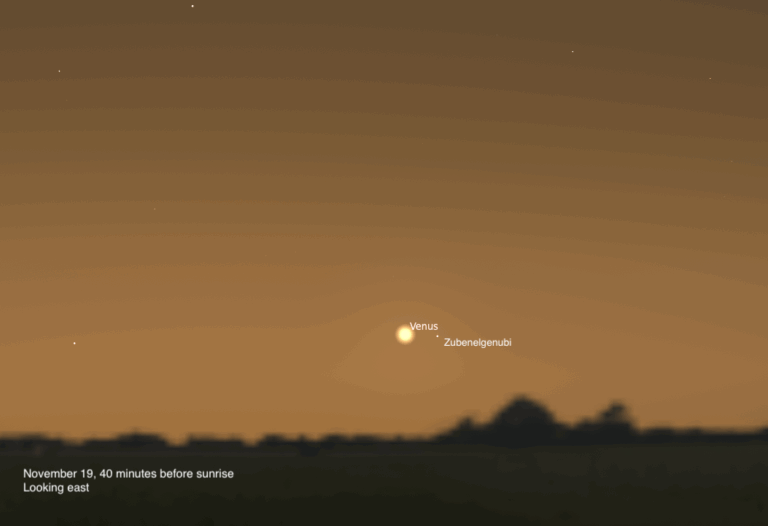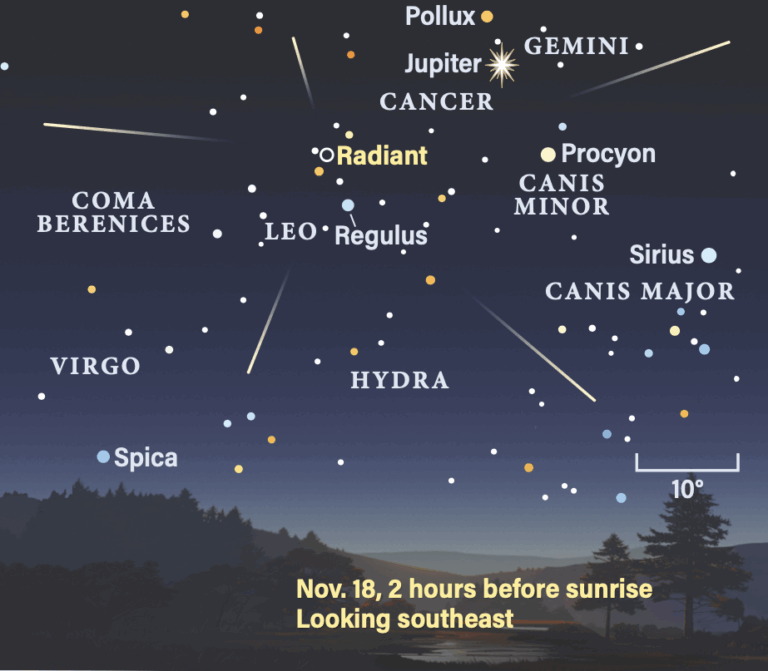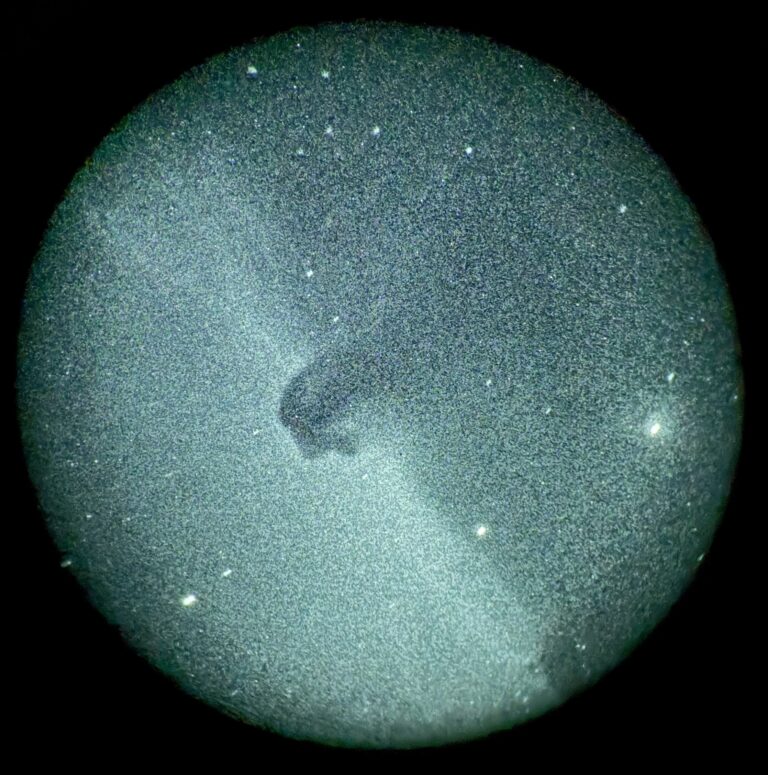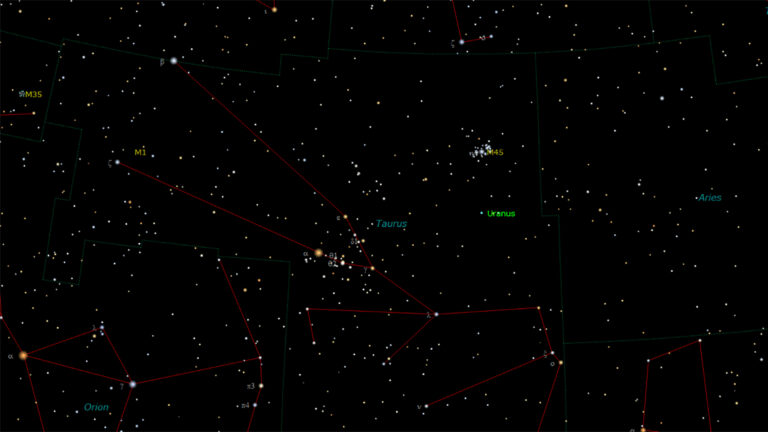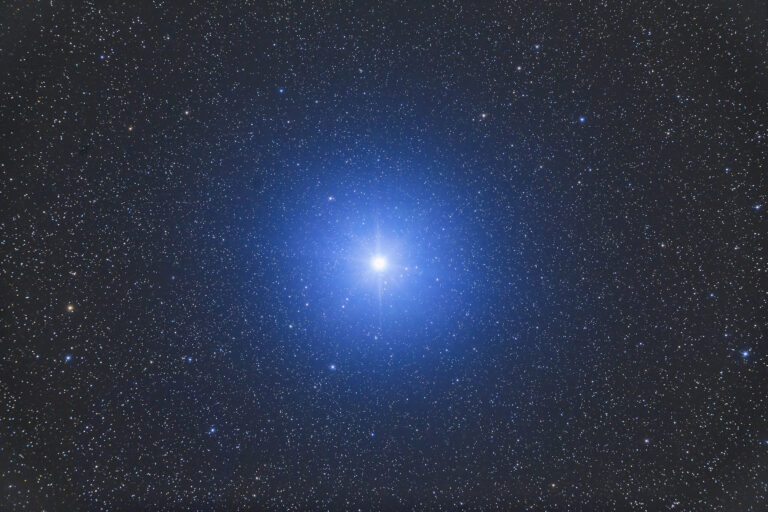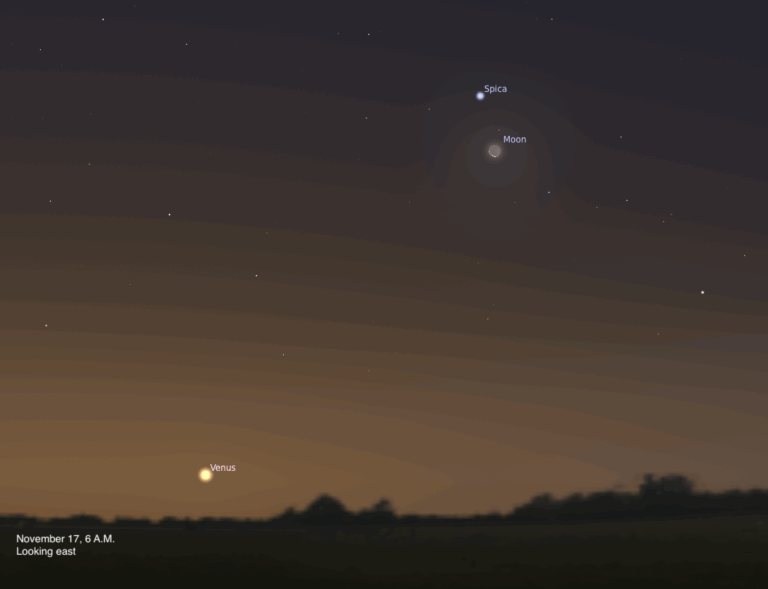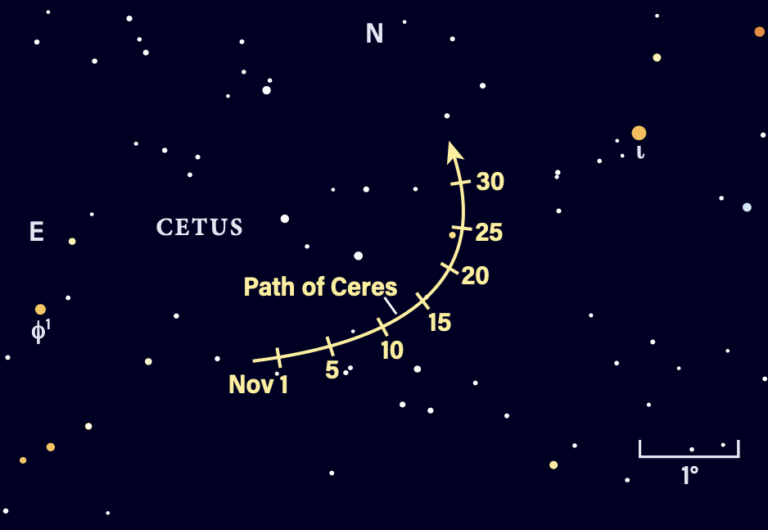Key Takeaways:
- Use the Big Dipper to locate Polaris, the North Star.
- Orion's belt helps find other bright stars like Sirius.
- Follow the Big Dipper's handle to find Arcturus and Spica.
- The Summer Triangle is formed by three bright stars: Vega, Deneb, and Altair.
If you’re a newcomer to amateur astronomy, eager to begin exploring the night sky, you’ll have to overcome one of astronomy’s biggest hurdles — learning to identify the constellations. After all, you can’t find the Andromeda Galaxy if you can’t find Andromeda. Trying to make sense of those myriad stellar specks overhead might seem intimidating, but making friends with the stars needn’t be a “mission impossible.”Remember your first day of school — entering that classroom and finding yourself confronted by a roomful of unfamiliar faces?
Even on that first day, you probably made a few friends. Through them, and with your day-to-day exposure to the classroom, you gradually became acquainted with all of your classmates. Learning the constellations is like that. With a little help from your friends (easy-to-find guidepost constellations) and a willingness to “show up for class” on successive nights, you’ll soon feel comfortable in your nighttime surroundings. So relax. It’s time to go to school and meet some new friends!
North circumpolar constellations
We begin in the northern sky, realm of those always-visible star groups known as the north circumpolar constellations. The most prominent figure is the Big Dipper (Note: The Big Dipper is not a constellation). These bright stars — four forming the “bowl,” three more tracing out the “handle” — create one of the most recognizable patterns in the night sky, an ideal guide for locating surrounding constellations.
As any good Boy or Girl Scout will attest, you can find Polaris, the North Star, by tracing a line between the stars Dubhe and Merak at the end of the bowl of the Big Dipper and extending it about five times the distance between them. When astronomical newcomers see this celebrated star for the first time, they are astonished that it isn’t much brighter than the stars in the Big Dipper. Polaris is the brightest star in Ursa Minor the Little Bear, which contains the Little Dipper. Like its big brother, the Little Dipper is made up of seven stars — four in the bowl, and three in the handle. Because four of its stars are dim, the Little Dipper is hard to see in light-polluted skies.
If you trace a line from the bowl of the Big Dipper past the North Star and continue it an equal distance beyond, you’ll arrive at an eye-catching group of stars that form a distinct letter M or W. This is Cassiopeia, Queen of Ethiopia
Winter constellations
It’s the Orion Nebula — one of the grandest telescopic showpieces the night sky has to offer. In binoculars, it appears as a fuzzy patch of light. When you gaze at this wondrous glowing cloud, you view creation itself, for within this luminous glow, stars are being born.
Orion is the focal point of a stunning gathering of bright stars and constellations. The belt points down and to the left to a brilliant white star: Sirius, the brightest star in the night sky, leader of the constellation Canis Major the Great Dog. Sirius always dazzles, but the star especially captivates when positioned near the horizon. During winter, atmospheric refraction causes Sirius to sparkle in a rainbow of colors — a beautiful sight through binoculars or a small telescope.
Return to Orion’s belt and continue up and to the right, and you arrive at a V-shaped group of stars called the Hyades. This is the “head” of Taurus the Bull. The reddish-orange 1st-magnitude star at the upper-left end of the V is Aldebaran — the eye of the Bull. Each end of the V extends outward to a star that forms one of the Bull’s horns. Continuing past the Hyades, you’ll see a little cluster of stars — one of the loveliest naked-eye sights in the night sky. This is the Seven Sisters, or Pleiades. Six are visible to the unaided eye under average sky conditions; binoculars reveal the seventh star, plus dozens more.
The uppermost horn of Taurus is part of a pentagon of stars that includes the bright golden-yellow star Capella. This pentagon is the constellation Auriga the Charioteer. Auriga lies above Orion and is overhead on a midwinter evening. The fact that these five stars represent a man on a chariot carrying a goat (Capella) attests to the vivid imagination of its ancient discoverers. Oh yes, that little triangle of stars beneath Capella represents the goat’s three kids!
Orion’s heavenly court includes Gemini the Twins. From Orion, extend a line upward from Rigel through Betelgeuse to this neat rectangular constellation, which contains the bright stars Pollux and Castor. In 2005, Gemini will be more aptly called the “Triplets,” for Pollux and Castor will be joined by a third bright “star” — Saturn. Midway and slightly left of a line between Sirius and the stars Pollux and Castor is the 1st-magnitude star Procyon. Procyon forms an equilateral triangle with Betelgeuse and Sirius. It’s about all you’ll see of Canis Minor the Little Dog.
Winter constellation audio tours
Spring constellations
If you look below and to the right of Spica, you’ll spot a neat little group of four bright stars that resembles the outline of a sail. This is the constellation Corvus the Crow. I’m always impressed at how stately this little constellation looks, perched above the treetops to the south on a clear spring evening.
Summer constellations
Farther south on the Milky Way is the bright star Altair and its parent constellation, Aquila the Eagle. If you follow the Milky Way from Aquila toward the southern horizon, you should find a group of stars that looks like a teapot. This asterism is part of Sagittarius the Archer. This constellation marks the location of our galaxy’s center. The area teems with deep-sky treasures — especially bright nebulae and star clusters. To the right of the teapot is the ruddy 1st-magnitude star Antares, the “heart” of Scorpius the Scorpion. Like the winter star Betelgeuse, Antares is a red supergiant star in the last stages of its life. A fishhook-shaped row of stars trailing down and to the left of Antares forms the Scorpion’s tail and stinger, while an upright row of three stars to Antares’s right marks the location of its claws.
Summer constellation audio tours
- Touring Sagittarius
- Touring Cygnus
- Touring Lyra
- Touring Scorpius
Autumn
Alpheratz is at the top left corner of the Great Square. From here, two rows of stars branch out and up. This is the constellation Andromeda the Princess. And yes, it is home to the great Andromeda Galaxy. At a distance of 2.7 million light-years from Earth, it’s the most remote object readily visible to the naked eye. Through binoculars, however, you’ll see an elliptical glow (the galaxy’s bright nucleus), which appears larger in small telescopes.
Now that I’ve introduced you to some of the constellations, it’s time to head out and make your own friends. The expansive night sky will become more familiar to you after spending quality time learning the “faces” of the constellations. Class dismissed!

